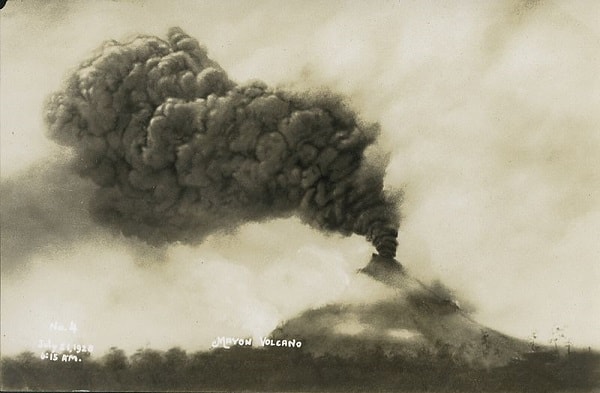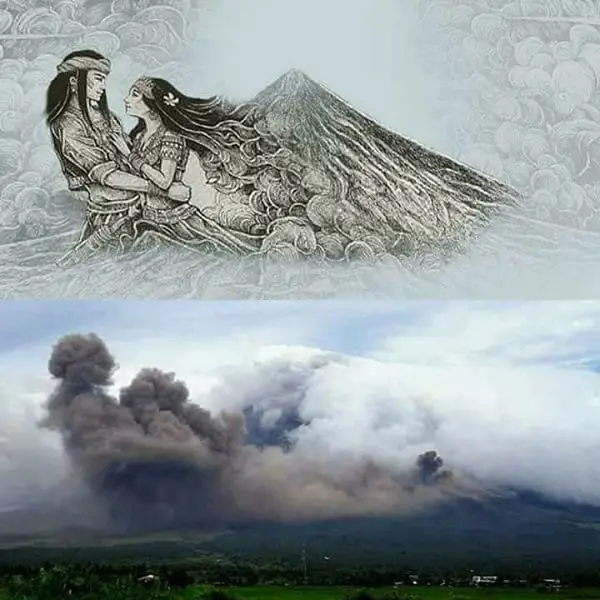5 Magnificent Facts About the Mayon Volcano

For the longest time, Mt. Mayon has been the Philippine counterpart of Japan’s Mt. Fuji. Just like the latter, it also exudes a panoramic beauty that attracts a myriad of tourists from around the globe.
Widely known for its symmetrical, “perfect cone” shape, this 8,077-foot active volcano is the main landmark of Albay Province and one of the country’s major tourist spots. Mayon Volcano is part of the Pacific Ring of Fire and is regularly monitored by PHIVOLCS.
Related Article: Mt.Pinatubo’s Eruption Aftermath, As Seen From Space
But beyond the usual facts and figures about Mayon Volcano are tragic stories that have made this landmark even more endearing. Here are 5 of the most fascinating facts you should know about the country’s “perfect cone”:
1. Mayon Volcano’s worst eruption reportedly killed 12,000 people

Described by experts as the worst Mayon eruption ever recorded, the February 1, 1814 tragedy claimed a total of 12, 000 lives. The eruption engulfed and destroyed most villages of Albay and Camarines as recorded in volume 51 of “Blair and Robertson”.
According to accounts, “hot stones, sand, and ashes” flowed from the crater, killing thousands of terrified inhabitants including those who were trapped inside the famous Cagsawa Church.
READ: The last photo of Cagsawa Church still intact
2. Mayon Volcano is the Philippines’ most active volcano

Mayon has remained in the public eye in recent years for one reason: it’s the country’s most active volcano. In fact, records show that Mayon Volcano has erupted almost 50 times for the past 400 years.
The first eruption ever recorded took place on February 1616 and was chronicled by Dutch explorer Joris van Spilbergen.
3. Mayon Volcano’s longest eruption lasted for 7 days

On June 23, 1897, Mayon Volcano terrorized the whole town with its 7 day-long eruptions. Fire literally rained over the nearby villages including Bacacay, Libon, and San Roque. The catastrophe killed hundreds of people who were either trapped by flowing lava or hit by hot rocks and steam.
4. Legend has it that the nearby Cagsawa Church was once home to snakes

After surviving the deadly 1814 eruption and various earthquakes, the Cagsawa belfry has stood as a grim reminder of Mt. Mayon’s destructive nature.
Constructed in 1724 by Franciscan friars, the baroque church is one of Albay’s popular tourist spots. The name came from kag meaning “owner” and sawa which pertains to a “phyton,” a type of snake. Legend has it that the church once kept snakes before it was destroyed by volcanic eruptions.
5. Mayon Volcano is intertwined with a tragic love story

The name Mayon originated from Magayon which literally means “beautiful.”
Local folklore reveals that Magayon was actually an ancient princess who was forced to marry his wicked suitor, Pagtuga after the latter kidnapped his father. On the day of the wedding, Magayon’s true love, Panganoron, tried to rescue the princess with the help of several men.
READ: The 6 Most Tragic Love Stories in Philippine History
The love story ended tragically when Magayon was hit by an arrow while Panganoron was stabbed to death. As the story goes, a mound grew from Magayon’s grave and eventually expanded to become the modern-day Mayon Volcano.
Written by FilipiKnow
in Facts & Figures, History & Culture, Science and Technology, Travel & Nature
Last Updated
FilipiKnow
FilipiKnow strives to ensure each article published on this website is as accurate and reliable as possible. We invite you, our reader, to take part in our mission to provide free, high-quality information for every Juan. If you think this article needs improvement, or if you have suggestions on how we can better achieve our goals, let us know by sending a message to admin at filipiknow dot net
Copyright Notice
All materials contained on this site are protected by the Republic of the Philippines copyright law and may not be reproduced, distributed, transmitted, displayed, published, or broadcast without the prior written permission of filipiknow.net or in the case of third party materials, the owner of that content. You may not alter or remove any trademark, copyright, or other notice from copies of the content. Be warned that we have already reported and helped terminate several websites and YouTube channels for blatantly stealing our content. If you wish to use filipiknow.net content for commercial purposes, such as for content syndication, etc., please contact us at legal(at)filipiknow(dot)net
